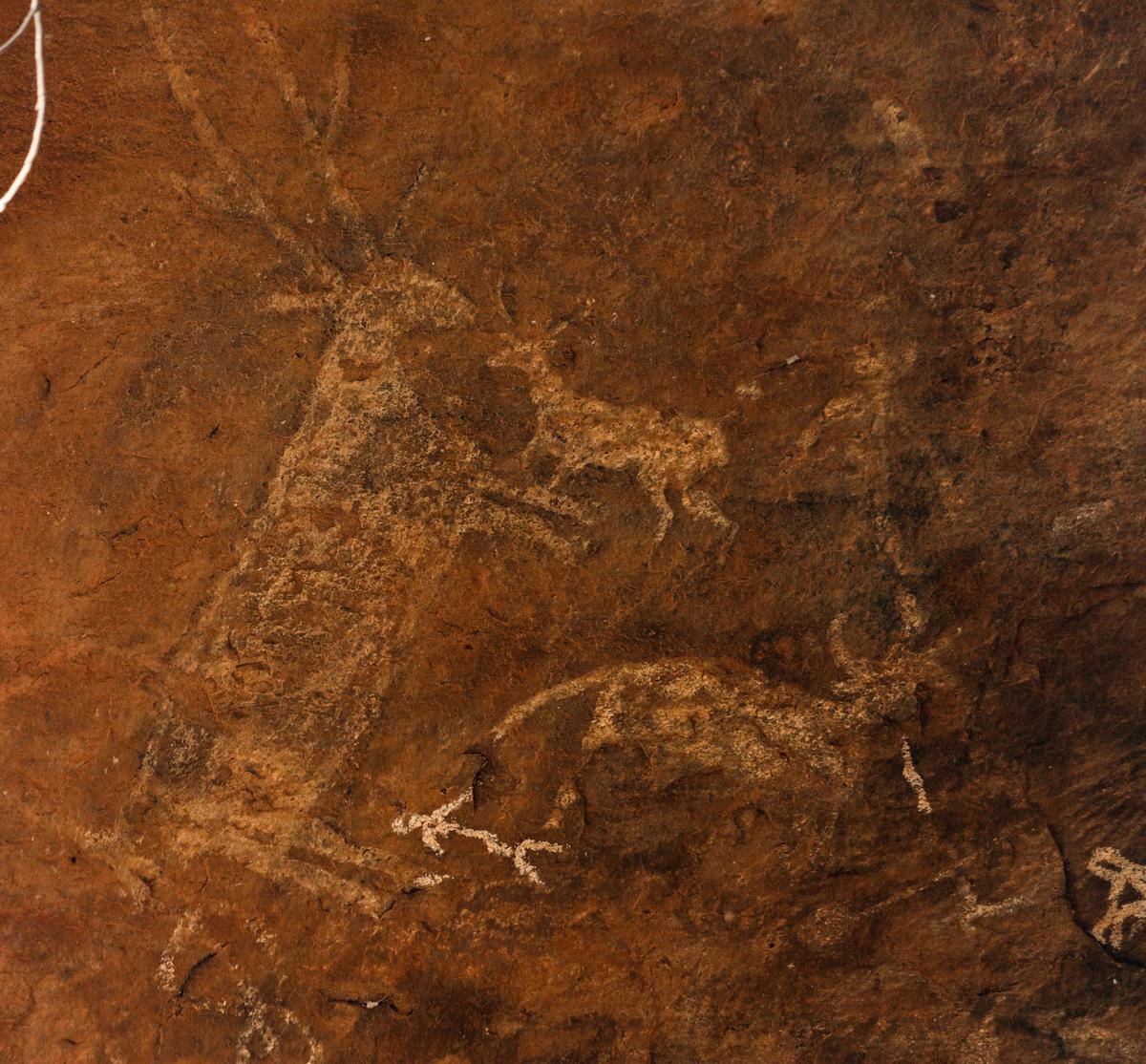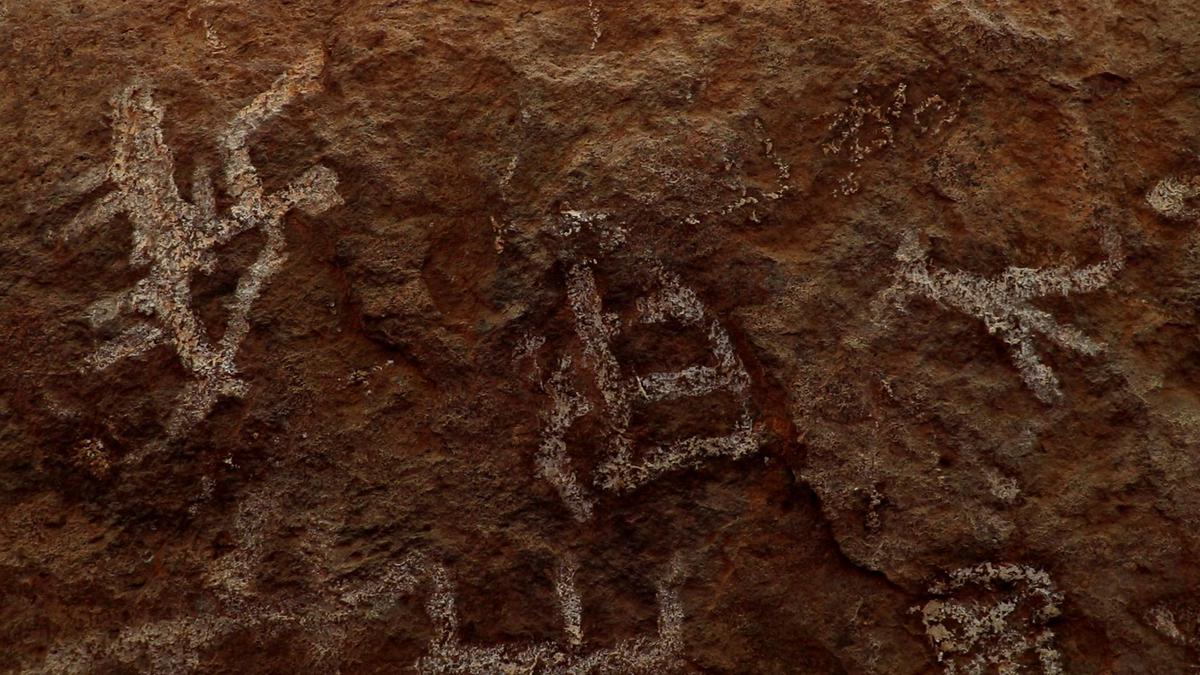Students revisit history on the rocky hills around Madurai and document rock art dating back 5,000 years
Students revisit history on the rocky hills around Madurai and document rock art dating back 5,000 years
Just before the pandemic hit, Ahil Rishi Rajasekharan was bird watching at Usilampatti, when some locals inside the forest area mentioned Chithirikal Podavu (cave with pictures). What the 20-year-old student of The American College didn’t realize then, the unique motifs had set him off on a journey of discovery of rock art in and around his hometown of Madurai.
Between 2020 and now, Ahil Rishi, along with his friends Hariharan, Praveen and Paul Musa, explored a treasure trove of 16 rock art sites with such passion that the Thanjavur-based Nerunji literary movement has now published their documentation of rock art forms have done. There are many publications in Tamil, but The Rock Art of Madurai: The Pre-History of a Civilization The first is in English.
Ahil Rishi, who has just completed his MSc (Microbiology), says that there are at least 25 rock art sites around the temple town and it is his dream to detail every discovery so that they can be saved from quarrying and mining in the future. . “It is important to partner with local landowners to protect these cave sites and the forests around them so that the cultural heritage and wildlife depicted in the paintings are preserved for future generations,” he says.
Cave paintings make a fascinating study. photo credit: Soma Basu
The college students were initially unaware of the inscriptions on the rocks. Then, they joined the Samnar Malai Jain Caves Trek with Green Walk, a people-led initiative based on the concept of trekking and tourism heritage sites around Madurai to raise awareness.
Ahil says, “Having seen the two-storey cave with many paintings at Usilampatti, this was the first time we saw in detail the early paintings adorning the walls of the caves and learned how rock art, cultural and natural heritage was a medium of communication. instrument.” Rishi. It also marked the beginning of a journey for the youth who have made several trips to the hills of Madurai in the last three years.
hard climb
“Most of the hills around Madurai are not vegetated, and in places like Yannai Malai and Tiruparanakundram, it is a huge single piece of stone. There were tough climbs at many places, but that didn’t dampen our curiosity or enthusiasm,” says Ahil Rishi, who has authored the book.

Fascinating Rock Art: In Usilampatti | photo credit: Soma Basu
The boys saw Kidripatti, Azhagar Malai, Karungalkudi, Keelavalavu, Puthurmalai, Kongar Puliankulam, Thiruvadhavur, Devankurichi, Thummanaikenpatti, Melakuyilkudi, Vikramangalam, Anaipatti, Peraiyur, Keezapatti, Manuthu, Keezhaperatti, Manuthu, Keezhaperpatti, Manuthu, Graiyuthu, Thiruvadhavur, Devankurichi, Thummanaikenpatti, Melakuyilkudi, Vikramangalam. and pictographs. He sought help from historians and archaeologists in discovering and identifying the major components of rock art forms and themes.
While this has resulted in an extensive basic level study of both intra- and inter-site rock art and the revelation of particular traits, Ahil Rishi states that the people of Madurai are unaware of the existence of such wealth. “Not a single sign board indicates the presence of these sites. They are not easy to find and reach; We also found several limestone boulders with deep, ancient carvings,” he says.
Enchanting rock art: bird-faced man in Azhagar Hills, done in red ocher | photo credit: Soma Basu
What attracted them further was the distance between the rock sites with differently themed hieroglyphs done in red ocher and white kaolin, some of the motifs having similarities in strokes and patterns that were typical of cultural and communal areas of that period. indicate a relationship between
Estimating the age of rock art is challenging but researchers believe that the rock art of Madurai is not less than 5,000 years old. This inference is based on stylistic comparison and relative dating methodology that analyzes and compares the types of motifs depicted on rocks, their location in the landscape, and other recognizable features from sites where similar dataable information is available, says Ahil Rishi.

Fascinating Rock Art: Pictographs of Kongar Puliankulam | photo credit: Soma Basu
“Studying the new discoveries will help to understand the purpose and meaning as many rock art motifs have also been found to resemble Indus allusions,” he says, adding that the relationship between what the art depicts and what it symbolizes can be complicated.